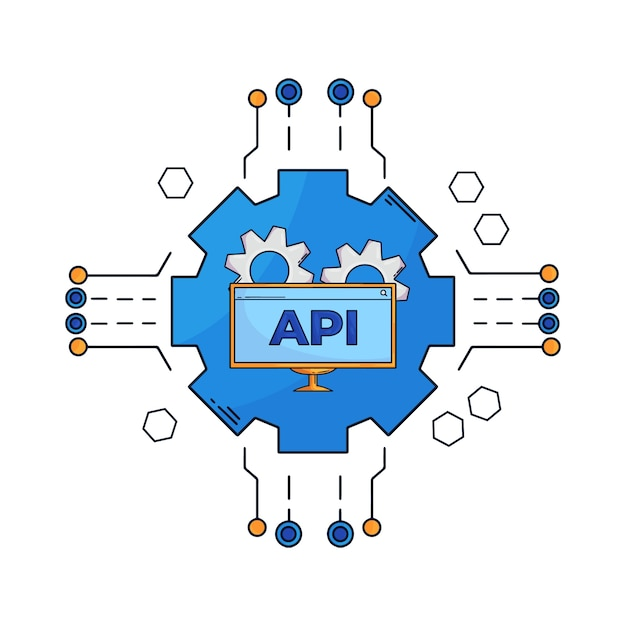Empowering Your Application with Third-Party APIs: Harnessing External Resources for Success
In today’s interconnected digital landscape, building applications that can leverage external resources is key to achieving success. One powerful way to enhance your application’s capabilities and functionality is by harnessing the power of third-party APIs (Application Programming Interfaces). These APIs allow your application to interact with external services and access a wealth of resources, opening up a world of possibilities. In this blog, we will explore how integrating third-party APIs can empower your application and contribute to its overall success.
Understanding Third-Party APIs
Before diving into the benefits of third-party APIs, let’s first understand what they are. APIs are sets of rules and protocols that enable different software applications to communicate and interact with each other. A third-party API, also known as an external API, is provided by a separate entity or service outside of your application. These APIs expose a range of functionalities and data that your application can utilize, augmenting its capabilities beyond what you could achieve with internal resources alone.

Harnessing External Resources
Integrating third-party APIs offers numerous benefits and empowers your application in several ways:
Access to Specialized Services: Third-party APIs provide access to specialized services and functionalities that may be outside the scope of your application’s core capabilities. By integrating these APIs, you can seamlessly incorporate features such as geolocation, payment processing, social media integration, messaging services, weather data, and more.
Time and Cost Savings: Leveraging third-party APIs can save development time and costs. Instead of building complex functionalities from scratch, you can rely on APIs that are already well-developed, tested, and maintained by the API providers. This allows you to focus on the unique aspects of your application and accelerate the development process.
Improved User Experience: Third-party APIs enable you to enhance the user experience by integrating popular and widely-used services. For example, integrating a map API can provide users with accurate location information and directions. Integrating a payment gateway API simplifies the checkout process, leading to smoother transactions and higher user satisfaction.
Rapid Prototyping and Iteration: Third-party APIs are invaluable when it comes to rapid prototyping and iterating on your application. They allow you to quickly incorporate new features and functionalities without extensive development cycles. This agility enables you to gather user feedback, test different concepts, and refine your application based on real-world usage.
Scalability and Performance: By offloading certain functionalities to third-party APIs, you can improve your application’s scalability and performance. External APIs often leverage specialized infrastructure and resources optimized for specific tasks. This allows your application to handle increased traffic, process data more efficiently, and deliver a seamless experience to users.
Data Enrichment and Integration: Third-party APIs provide access to external data sources, which can enrich your application’s data and enhance its overall value. For example, integrating a weather API can provide real-time weather information for location-based services. By integrating multiple APIs, you can aggregate and combine data from various sources, unlocking powerful insights and functionalities.
Best Practices for Integrating Third-Party APIs
To harness the full potential of third-party APIs effectively, consider the following best practices:
Research and Choose Reliable APIs: Before integrating any third-party API, thoroughly research its documentation, reviews, and user experiences. Ensure that the API is reliable, well-documented, and actively supported by the provider. Look for APIs with strong security measures, reliable uptime, and scalable infrastructure.
Understand API Limitations: Familiarize yourself with the limitations and usage restrictions of the APIs you plan to integrate. Pay attention to rate limits, authentication mechanisms, and any additional requirements or costs associated with using the APIs. Adhering to these limitations will help you avoid disruptions and unexpected issues.
Implement Error Handling and Graceful Degradation: When integrating third-party APIs, it’s essential to handle errors gracefully. APIs can experience downtime, connectivity issues, or unexpected changes. Implement error handling mechanisms to handle API failures and provide a smooth user experience. Consider fallback strategies or alternative approaches to ensure your application continues to function even if an API becomes unavailable.
Authenticate and Secure API Access: Follow secure authentication practices when integrating third-party APIs. Utilize authentication mechanisms such as API keys, tokens, or OAuth to protect your application’s access to external resources. Take care to securely store and manage any credentials or access keys used to communicate with the APIs.
Monitor API Usage and Performance: Implement monitoring and analytics tools to track the usage and performance of integrated APIs. This allows you to identify potential issues, track usage patterns, and optimize your application accordingly. Keep an eye on API updates, deprecations, and new versions to stay up to date with the latest improvements and changes.
Conclusion
Integrating third-party APIs is a powerful way to empower your application and unlock a wide range of capabilities and resources. By harnessing external services, you can enhance your application’s functionality, improve the user experience, and accelerate development cycles. Remember to choose reliable APIs, understand their limitations, and implement secure authentication practices. With careful integration and adherence to best practices, you can leverage the power of third-party APIs to drive the success of your application in today’s interconnected digital landscape.

